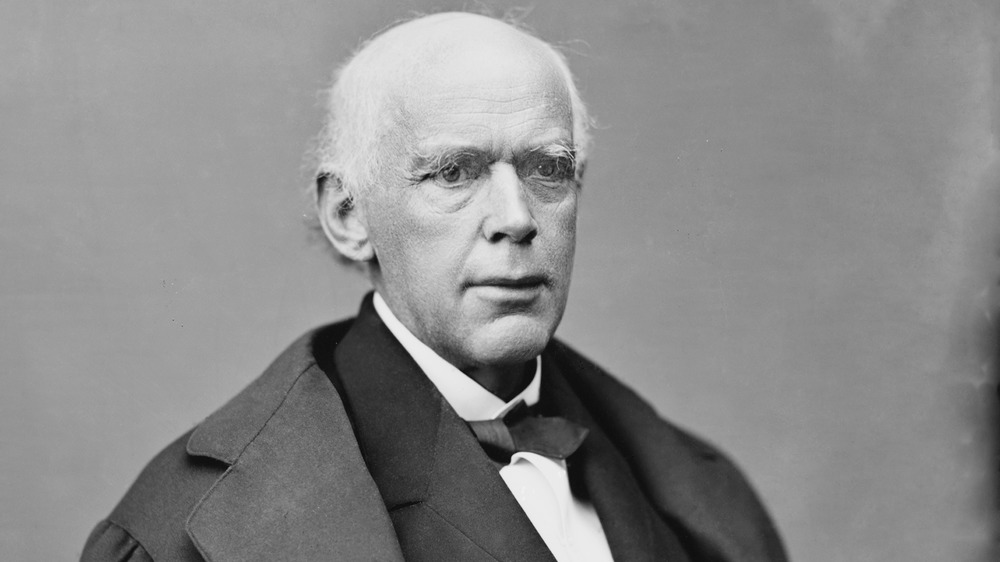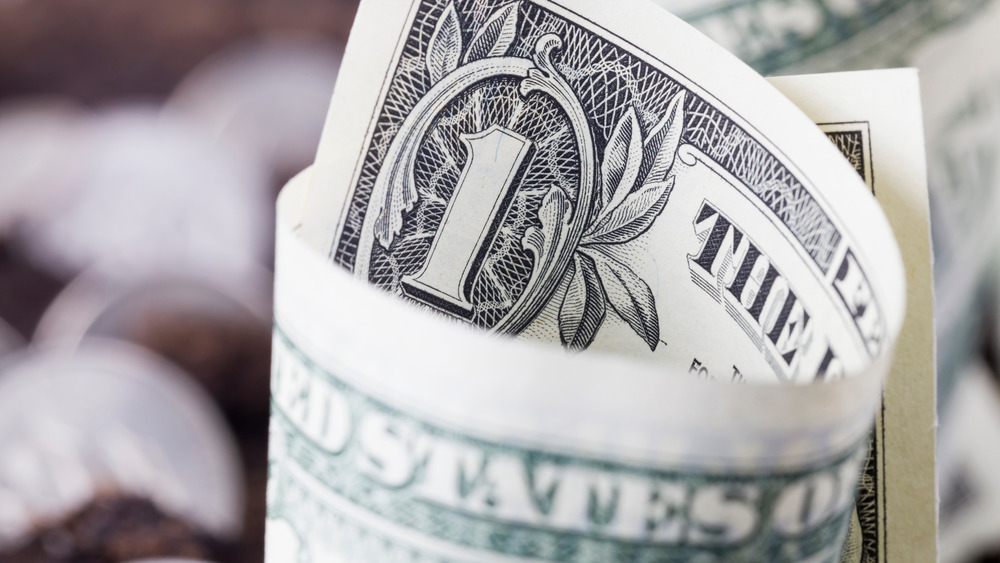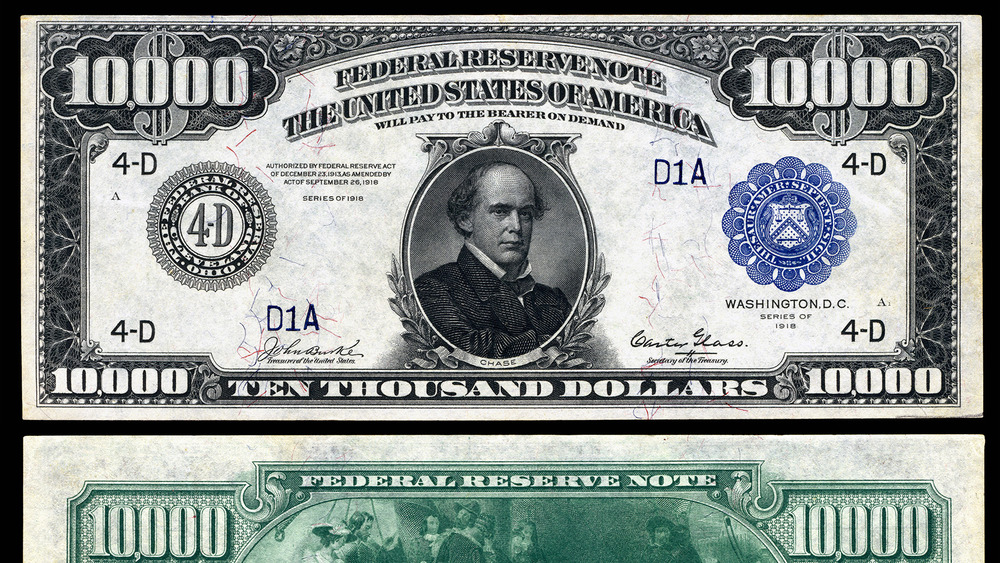The Truth About The First Person Who Was On The $1 Bill
The $1 bill is one of the most commonly used denominations. It can buy you some really surprising things. No one sings about singles, because it's all about the Benjamins but, let's be real, not many people carry $100 bills. (According to the Federal Reserve Bank of San Francisco, the most circulated bill is the $20.)
The $1 bill has gone through several changes over the years, including changing the face of the bill itself. The nation's first president wasn't always the one on the one. The first $1 bill featured Salmon P. Chase, a politician, former Treasury Secretary, and Chief Justice of the Supreme Court.
Chase was born in New Hampshire. He became a prominent politician representing Ohio, where he had moved when he was young to live with an uncle. Like many politicians of his day, Chase first became a lawyer. In his practice, he picked up cases defending people who escaped slavery, making him a very important early abolitionist, explained Encyclopedia Britannica. He also defended white people who helped slaves escape.
It was his changing views on slavery that made him switch his political affiliation and help found the Republican Party. Chase then ran for a Senate seat in 1849, the first of his two terms in the Senate. He was also the first Republican governor of Ohio.
In his time in the Senate, Chase ran for president. He ended up running for that office about four times, including the time he ran as a Democrat.
We can thank him for the dollar
In 1860, Chase lost in the convention and allowed his electors to vote for Lincoln. When Abraham Lincoln became president, he appointed Chase as Treasury Secretary, and in 1861, he resigned his Senate seat to take the role.
As head of the Treasury Department, Chase was responsible for helping finance the Civil War. But more than that, it was under his watch that the United States implemented the first income tax and, most importantly, released its first paper currency. The bills were called greenbacks because of the color, a slang word for the dollar that some business people still use today, wrote the Treasury Department.
Chase led the design of the first dollars and chose his portrait for the $1 bill. His detractors claimed it was to further his political ambitions, which might have a tinge of truth to it, since he once again made a play for the presidency even as he served in Lincoln's cabinet. The Library of Congress says Chase was also responsible for adding the phrase "In God We Trust." He did do other things in the Treasury, like uphold bank charters and make the establishment of new banks easier, but when you put out the first paper currency, nothing tops that.
Oddly enough, Chase so liked the portrait used for the $1 bill that he had it printed on his business cards. He joked that his photo was chosen because the bill needed a handsome man.
He was on another piece of currency
The Treasury Department eventually used that picture to posthumously paint Chase's official portrait, hanging in the Treasury building.
Despite overseeing the launch of dollar bills, Chase only held on to his post until 1864, when he was appointed Chief Justice of the Supreme Court. He conducted trials around Reconstruction and presided over the impeachment trial of President Andrew Johnson in 1868.
His rise to the top of the judicial ladder was controversial, as he and Lincoln did not have the smoothest of relationships, and he frequently threatened resignation. Chase remained staunchly anti-slavery throughout his time in the Supreme Court and tried to protect Black men and women's rights. He continued to seek the presidency as he served on the Supreme Court. When he tried to run as a Democrat (then the party that supported slavery), he couldn't get the nomination because of his stance on Black voting rights.
Chase died in New York in 1873. One of the memorials to him was the naming of Chase National Bank in his honor; you might know it as JPMorgan Chase after J.P. Morgan bought it. The Treasury Department, in recognition of his role in the creation of the greenback, used Chase's portrait on the $10,000 bill, which was in circulation until 1945. Being on the $10,000 is a step up from the $1.


